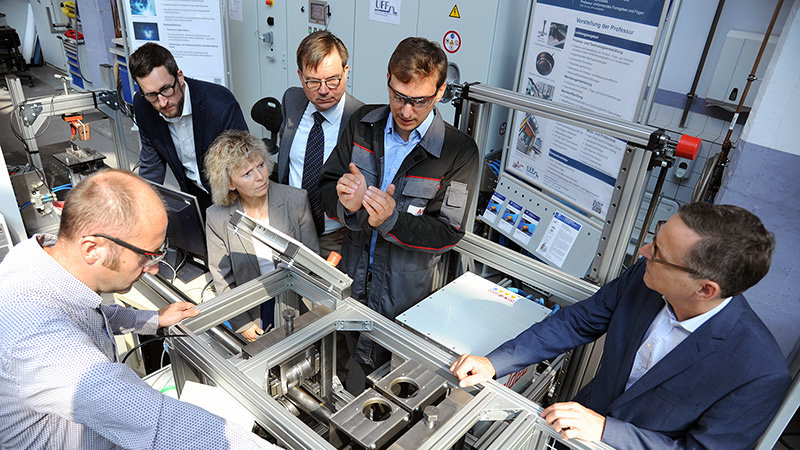The academic department of Forming and Joining at TU Chemnitz is expanding its systems technologies for research into complex welding, heat treatment, and forming tasks
Since 29 June 2018, the academic department of Forming and Joining at TU Chemnitz has been using a new induction generator that enables the heating of semi-finished goods consisting of several layers of different materials by applying different frequencies in a targeted manner. This may be useful in particular for the production of plated pipes in the chemical industry or in power plants. 62,000 tons of pipes are produced for these sectors per year in Germany alone.
More environmentally friendly production of pipelines
“Having the right material with the right characteristics in the right place for optimal functionality plays a large role for both energy and resource efficiency,” says the Chair of the academic department of Forming and Joining, professor Dirk Landgrebe. For example, pipelines that carry aggressive media do not necessarily have to consist completely of costly, corrosion-resistant steel. Often a layer of only a few millimeters is enough for protection. To heat up this compound material in a targeted manner, the Chemnitz-based scientists will in future be using Simultaneous Dual Frequency generator technology. “The new SDF generators are able to generate electro-magnetic fields in two different frequency ranges and overlay them. This offers great versatility for addressing different heating tasks”, says Landgrebe. This makes targeted heating of multi-compound materials for the production of plated pipes easy, which effectively results in a more environmentally friendly production of pipelines.
Interdisciplinary cooperation within the university
The academic department of Forming and Joining will in future be using an SDF generator with a total power of 225 kW in its teaching and research. The manufacturer, EMAG eldec Induction GmbH, configured the system specifically for the requirements of the academic department. In addition to new systems technology with a total value of almost a quarter of a million euros, collaboration with the Control and Feedback Control Technology division at the academic department of Machine Tools and Forming Technology at TU Chemnitz produced a thermo-mechanical simulator for experimental representation and specification of custom welding processes for pipes and circuit boards.
Besides pipe and circuit board welding, this new technology provides students and researchers at TU Chemnitz with opportunities for a multitude of theses and research projects in fields such as inline heat treatment, incremental sheet metal forming, induction-supported additive manufacturing, and induction-based joining of compound materials. The ability to make custom induction coils in the in-house inductor workshop provides opportunities for the development of a wide variety of heating solutions in collaborative projects across academic departments.
Keyword: Simultaneous dual-frequency technology for induction-based heating processes
Every electrically conductive material can be heated without contact through electromagnetic induction. The Joule heat is generated directly in the workpiece to be processed and does not have to be transmitted through heat conduction. High power density and excellent efficiency provide for very short heating times, high process reliability, and automation capacity. The penetration depth of electromagnetic fields is primarily dependent on frequency, in addition to electrical conductivity and permeability. Only targeted use of frequency ranges enables the adjustment of specific temperature distributions in components to be heated. High-frequency electromagnetic fields are particularly suitable for heating thin metal sheets, carbon fiber, and metallic wires. Low frequencies on the other hand enable quick through-heating of solid parts.
Source: https://www.tu-chemnitz.de/tu/pressestelle/aktuell/8887

